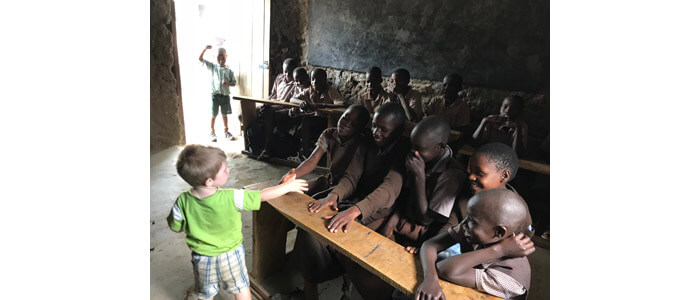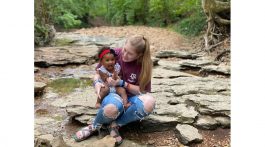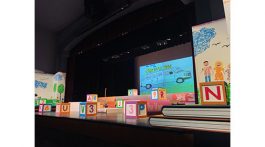During our first trip to Kenya, I noticed that very few of the kids in the villages wore shoes. Thinking it would be a nice gesture to buy shoes for a few of of the kids, I asked our Kenyan guide where I could purchase some.
He quickly replied: “You don’t want to do that.”
“Actually, yes, I do.” I replied.
He then explained to me the problem with my gesture. Village kids were used to running around with no shoes. If I were to buy them shoes, things would be great for awhile…until they outgrew them or wore them out. Then, they would have lost the callouses on their feet and have no ability to buy new shoes. He asked if I was prepared to commit to buying shoes for a few kids for a decade or so until they reached adulthood. Unfortunately, I was not.
This was my first introduction to what I’ll call the “when helping hurts” problem (as popularized by the book of the same name by Steve Corbett). Sometimes, helping someone isn’t as simple as it seems.
Here are two more interesting examples:
The problem with Tom’s Shoes “buy one, give one” model (disclaimer: I’m not anti-Tom’s Shoes. They are learning and innovating and making a real difference in a lot of healthy ways.)
How one church gave some eggs and caused a problem
This brings me to the story of how we ended up spending vacation time in a rural village in Kenya. In 2001, my wife and I met orphans in the slums of Nairobi. Since then, we had a dream to build an orphanage in Africa for kids like those. After we moved back to Amarillo, we decided it was time to start doing some research so that, when and if the time came, we’d be ready. (I’m a fan of the quote “A dream without a plan is a wish.”) At some point in our planning/brainstorming process, we sought out the advice of a friend who had quite a bit of experience helping orphans in Africa. Here’s how that conversation went:
Me: “We’ve decided that we want to build an orphanage in Africa. Can you help us start laying the ground work for something like that?”
Friend: “You don’t want to do that.”
Me: “Actually, yes, we do.”
Friend: “I understand what you’re trying to do, but there’s one issue that you may not have thought of: in certain areas in Africa, you might inadvertently create as many orphans as you are helping.”
Me: “Huh?”
Him: “In some places in Africa, impoverished parents may drop their kids off on the doorstep of your nice, new orphanage in hopes that your orphanage will give their kids a better future than they can.”
Me: “Ugh. No, I had not considered that.”
Him: “It’s not that this will certainly happen or that building an orphanage is a bad plan. I just think that there might a better way to help the orphans in Africa.”
Me: “Ok. So, what should we do?”
Our wise friend proceeded to lay out a plan for us. His plan starts with clean water. Access to clean water is a huge issue in many areas in Africa. So, if you want to help, a good starting point is drilling a well in an area that doesn’t have access to clean water. The well will likely be frequented by many of the nearby orphans, widows, and other impoverished; so, it will be helpful to build a church building next to the well. Then, you will want to find a local pastor who will meet those who come to the well, build relationships, and work with them to help them meet their other basic needs. Additionally, it is a good idea to buy a bit of land adjacent or near to the church. The church can turn this land into a small farm. This farm will help sustain the church and meet the needs of the community. Then, if all goes well, you may want to build a school to provide education to the orphans and other children in the area.
The preceding conversation is what led us to the small village of Metkei, Kenya. From the moment we set foot on the ground in Metkei, I realized that time we spent in Kenya wasn’t going to be about us helping impoverished Kenyans. It was going to be about them helping us. More specifically, it was going to be about them helping us teach our kids life lessons—life lessons our kids wouldn’t be able to learn in Amarillo, Texas. We might be able to help meet some of the Kenyans’ physical needs in small ways; but, they were going to teach us volumes about some of the most important things in life. They were full of hope. They were full of joy. They were intelligent. They were incredible stewards of their land. They were better at taking care of their orphans and widows than any church we have encountered in the US. They were masters in the art of hospitality.
So, that’s what Kenya taught us about helping people. Lesson #1: it’s not always as simple as it may seem at first glance. Sometimes, helping hurts. The best way to avoid this phenomenon is by taking the time to build relationships first. Fortunately for me, I had people in my life who had taken time to do just that. These friends were able to advise me against my plans—plans that may have unintentionally hurt someone rather than helped them. Lesson #2: sometimes the people that you deem the most in need of help are actually the ones in the best position to help you—and they can help you in ways that no one else in your sphere of influence can.
If you’re interested in the rest of the story: thanks to Christian Relief Fund and a wonderful foundation out of Dallas, there is now a school in Metkei along with a well, church, and farm. All of them are operated by residents of the village. Widows are employed by the farm. Orphans are given clothes, food, and shelter by the church. God is good.




No Comment